Tabriz
Tabriz (Persian: تبریز, Azerbaijani: Təbriz) is the capital of East Azerbaijan province, in the Azerbaijan region of Iran. It is a modern industrialized Iranian city with signs of civilization dating back 2,500 years. Having some of most famous museums, holding some of the cultural events, and harboring a couple of the most prestigious Iranian universities, the city is considered a major hub for science and culture in Iran. Tabriz was named by the Organization of Islamic Conference as the "city of the Islamic world tourism" for 2018.
Understand
People
The majority of the city's population are Iranian Azerbaijanis, followed by Persians, Armenians, Assyrians, and other people of the Caucasus.
Geography
Situated at an altitude of 1,340 meters above sea level, 619 km northwest of Tehran, it was the second largest city in Iran until the late 1960s. It is a former capital of Persia, and had a population of 1,400,000 according to 1992 census. Tabriz is in a valley to the north of the long ridge of Mount Sahand. The valley opens out into a plain that slopes down gently to the northern end of Lake Orumieh, 60 km to the west. The 160-km long Aji ,Chai or Talkheh River is the major river of the city, formed by merging of three smaller rivers, namely the Ab Nahand, Quri Chai, and Ojan Chai, all of which originate from the Sabalan Mountain and the heights in the southeastern part of the town. The river and streams join the Orumieh Lake after passing through the valleys between the Sorkhband and Yekkeh Chin mountain north of Tabriz and Osku district. Mehran River or Maidan Chai, also called Liqvan River, originates from the peaks between Karim and Sultan mountains overlooking the Liqvan village (a major center of cheese production in Iran) near Esparakhoun and Qeshlaq. Its worst natural disadvantage, however, is its vulnerability to earthquakes, one of which utterly destroyed the city in 858. Rebuilt in a minor key, it was again devastated in 1041, when more than 40,000 people lost their lives.
Climate
By virtue of its situation, Tabriz has a continental climate with low humidity (average annual rain fall is 288 mm). It has a modestly warm summer climate and a severely cold winter.
History
The town has a long and checkered history. Although the early history of Tabriz is shrouded in legend and mystery, the town's origins are believed to date back to distant antiquity, perhaps even before the Sassanian era (224-651 AD). The oldest stone tablet with a reference to Tabriz is that of Sargon II, the Assyrian king. The tablet refers to a place called Tauri Castle and Tarmkis. The historians believe that this castle was situated on the site of the present Tabriz. It was the capital of Azarbin the 3rd century AD and again under the Mongol Ilkhanid dynasty (1256-13 53), although for some time Maragheh supplanted it. During the reign of Aqa Khan of the Ilkhanids, as well as under the reign of Ghazan Khan, Tabriz reached the peak of its glory and importance. Many great artists and philosophers from all over the world traveled to Tabriz. During this same period, Khajeh Rashid od-Din Fazlollah, the learned historian and Minister of Ghazan Khan, built the famous Rob'e Rashidi center.
In 1392, after the end of Mongol rule, the town was sacked by Tamerlane. It was soon restored under the Turkman tribe of the Qara Qoyunlu, who established a short-lived local dynasty. Under the Safavids it rose from regional to national capital for a short period, but the second of the Safavid kings, Shah Tahmasb, moved the capital to Qazvin because of the vulnerability of Tabriz to Ottoman attacks. The town then went into a period of decline, fought over by the Iranians, Ottomans and Russians and struck by earthquake and disease.
Tabriz was the residence of the crown prince under the Qajar kings, themselves of Turkish stock, but the town did not return to prosperity until the second half of the 19th century. The greatest boost to Tabriz came with the opening up of Persia to the West at the turn of this century, when it became the main staging post between the interior of Iran and the Black Sea and, for a short time, the economic capital. In 1908 it was the center of a revolt against Mohammad Ali Shah, which was only put down with the brutal intervention of the Russians.
In the second Irano-Russian War the city was occupied by the Tsar's troops. However, it was returned to Iran following the signing of the Turkmanchai Treaty, a peace and trade settlement that ended the Irano-Russian War of 1826-1828. The Iranian Constitutional Revolution originated in Tabriz and culminated during the reign of Mohammad Ali Shah of Qajar dynasty (1779-1925). Sattar Khan and Baqer Khan were the two most prominent leading figures behind the movement. Tabriz was occupied by Russians several times in the first half of the 20th century, including most of both world wars. A railway line to the border at Jolfa, built by the expansionist Russians, has been of little importance, but it increased in significance in the 1990s as a result of Iran's friendlier relations with its northern neighbors.
Talk
Azerbaijani, a Turkic language, is the primary language spoken by most Tabrizis, although many people, especially the younger generation, can communicate in Persian and moderate to advanced English.
Get in
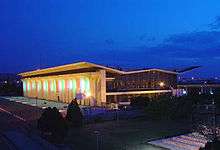

Tabriz is 310 km southeast of Bazargan (at the Iran — Turkey frontier), 159 km south of Jolfa on the Iran — Azerbaijan Republic border, and can be reached by road, rail (742 km from Tehran, with connections to Europe and Moscow), air from Tehran, Istanbul and other major cities in the region, and highway (Highway number 1 connects Tabriz to Tehran).
By plane
- 🌍 Tabriz International Airport (TBZ IATA), Bolvar-e-Shahid Khalaban Babayi (10 km from the city center), ☎ +98 411 523 4705. This is a hub airport for Ata Airlines.
Airport bus #136 goes to airport from Motahhari St. every 30-40 minutes. Another option is getting a taxi.
Domestic flights
- Ahwaz operated by Iran Air
- Bandar Abbas operated by Iran Air
- Isfahan operated by Iran Air
- Mashhad operated by ATA air, Iran Air Tours, Iran Aseman and Zagros Airlines
- Shiraz - Mon and Fri, operated by Iran Aseman . Fare is 2,200,000 rials for 1-way.
- Daily direct flights to Tehran (Mehrabad Airport) by Iran Air, Iran Aseman and other companies. Fare is 490,000 rials for 1-way.
International direct flights to the following destinations exist:
- Baghdad - F and M, operated by ATA air.
- Baku - Tu and Sa, operated by Kish Air.
- Damascus.
- Dubai - Tu and Sa, operated by Kish Air (around 200 USD for round trip).
- Gaziantep - Tu, operated by Sky Airlines.
- Istanbul 13 flights per week, operated by Turkish airlines (7 flights), Iran Air (2 flights) and ATA air (4 flights). Fare is around 250 USD for a round trip.
- Tbilisi 2 flights per week, operated by ATA air.
By car
By the bridge over the Urmia lake Tabriz is reachable from Urmia in 1.5 hours.
By train
- 🌍 Railway Station, Rah-Aahn Sq. (5 km W of city center). Domestic trains: There are comfortable night trains to Tehran(12 hr travel, 152,500 rials for 1-way ) passing Maraghe (2 hr), Zanjan (9 hr) and Qazvin. There is a 2nd class sleeping train (6 people in one room) that leaves Tabriz at 20:30 and arrives to Tehran at 09:30. Price is 40 000 rials. The more comfortable choice is to take 1st class train for 170 000 rials. This train leaves at 17:30 and arrives in Tehran at 06:00. There are 4-bed rooms with TV and dinner is included in that price. To get the ticket you need to use some of travel agencies in the city or in the train station (this option only for recent day registration). From Tehran to Tabriz there are daily sleeper trains at 16:00 and 18:30 respectively, the journey takes around 13 hr. For a bed in a 6-bed cabin the price is around 350,000 rials, no food included (Sep 2017). International trains: a train runs once a week (departing 23:30 Mondays) to Van in Turkey, (arriving 07:00 Tuesday). The eastbound train leaves Van Tues 21:00 to arrive Tabriz by 07:30 Weds. For Ankara and Istanbul, take the bus from Van or twice-weekly train from Tatvan on the other side of the lake. The through-train "Trans-Asia Express" between Ankara and Tehran remains suspended. For more info visit Iranian Passenger Railway or Travel Site about trains Seat61.
By bus
- 🌍 Main Bus Terminal, Niyayesh Blvd. (3 km S of city center), ☎ +98 (41)34796091. There are bus lines from Tabriz to Iranian major cities including: Tehran 6-8 hr travel time (regular ticket costs around 150,000 rials for one-way), Ahvaz 15 hr, Ardabil 4 hrs, Esfahan 17 hr, Maku 4 hr, Maraghe 2 hr, Qazvin 7 hr, Shiraz 23 hr, Zanjan 5 hr. International bus routes include: Baku Azerbaijan 15 hr, Istanbul Turkey 33 hr and Yerevan Armenia 10 hr.
Get around
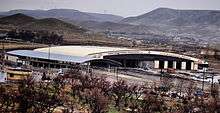
City transport awaiting the Metro that's only partly operational is limited to taxis, shared taxis and buses.
By metro
Tabriz is planning for an extensive metro system but only one section of Line 1 is operational (6 stops from El Goli to Ostad Shahryar).
By taxi
Taxis can be chartered for a modest fee (around 20 USD if you need a driver and car for the whole day to visit the region!)
By shared taxi
Shared taxis are even more of a bargain, but you will need to speak a few words of Persian and risk your life by stepping on the side of the road and scream your destination at passing-by Paykans. However, the experience of sharing a car with 4 locals of both genders and all ages (+ driver) can be fun! Some drivers refuse to be paid, the pleasure of chatting with a foreigner about the various plagues of Iran being apparently enough to make their day. (be careful of tarof, though)
By bus
Buses are difficult to take (no map, no schedule) and definitely not worth the experience when compared to shared taxis despite being quasi-free.
See
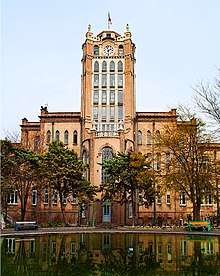
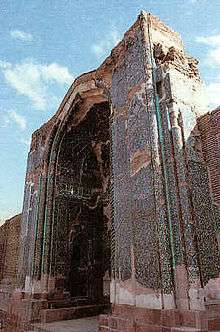
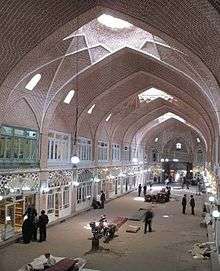
Inside Tabriz
With a very rich history, Tabriz used to house many historical monuments. Unfortunately, many of them were destroyed in repeated invasions and attacks of foreign forces, negligence of the ruling governments, and natural disasters such as earthquakes and floods. What remains now mostly dates back to the Ilkhanids, the Safavids, and the Qajars. Some of the monuments are unrivaled masterpieces of architecture. The Shahrdari Square is the center of the town, on the south-west of which stands the imposing edifice of Municipality. The railway station (5 km from the center of the town) is at the western edge of the town. The Quri Chai river runs through Tabriz, and most places of interest to the visitor are to the south of this river and alone or north of Imam Khomeini Avenue.
- 🌍 Saat Tower, Saat Sq., Emam Ave.. Saat Tower is the symbol of Tabriz. It was used as the main office of the city municipality. Nowadays it is the cite for the Municipality Museum which displays pictures and items from Tabriz' history (in the basement), and it also displays carpet family (in first floor). None of the museums is signposted. Free.
- 🌍 El Goli (locals call it Shah Goli), Shahgoli Blvd. (South east of Tabriz). It is a pool and a building in the middle of the poor. It used to be the summer palace for rulers or the king who ruled in Tabriz. Nowadays it is considered a suburban park with a square artificial pond. In the center, a small hall is on an island and hosts a restaurant. Very nice for eating some tchelokebab or sip some tea while enjoying the freshness of the park in summer.
- 🌍 Blue Mosque (Goy Machid), Near to Mansur St., Emam Ave (City Center, close to Saat Tower). 09:00-16:00. Built in 1465, this mosque was famous because of its blue tiles. It was severely damaged in an earthquake in 1778, leaving only the entrance Iwan. It was reconstructed in 1970s by the Iranian Ministry of Culture. Inside of the mosque was tiled with superb blue ceramic many of them destroyed during the earthquake. During reconstruction which is still in progress many of the missing parts replaced by painting instead of tiles. Some of the original tiles are the entrance. 150,000 rials.
- 🌍 Bazaar of Tabriz, Rasteh-Kucheh (City center). One of the oldest bazaars of the Middle East and the largest covered bazaar in the world. It was inscribed as World Heritage Site by UNESCO in July 2010. The bazaar is still alive and considered one of the major shopping and commerce center in Tabriz. Tabriz has been a place of cultural exchange since antiquity and its historic bazaar complex is one of the most important commercial centers on the Silk Road. Located in the center of the city of Tabriz, Iran. Bazar consists of several sub-units called Bazarche (sub-Bazar) each of which devoted to trade and shopping of specified goods. The most famous Bazarches are Amir Bazaar (for gold and jewelry) and Mozzafarieh (a carpet bazaar). Although, numerous modern shops and malls have been established nowadays, the bazaar of Tabriz has remained economic heart of both the city and northwestern of Iran.
- 🌍 Ark-e-Alishah (Ark Citadel), Serah Taleqani, Emam Ave (City Center, close to Saat Tower.). During the Friday prayers there might be some restrictions for visitors.. It is a 28-meter wall which is the remnants of Tabriz city citadel and city wall. Ark construction was aimed to make a big mosque in the 13th century; however, the construction was never completed and a devastating earthquake ruined much of it except the main wall of the mihrab, which is still standing today. In later years this wall used as part of the city wall and the main part of fortress of Tabriz until end of Qdjar dynasty. During the wars of Safavid-Ottoman, and Perso-Russian wars this fortress was always one of the major Strong holds of Iranian troops. In early 20th century the constitutional revolutionists used the ark citadel as their military base in Tabriz. At the collapse of Autonomous Government of Azerbaijan Ark was the latest resistance of their troops against Iranian army. The surrounding area of Ark has been used to build another big mosque for Friday prayers.
- 🌍 Constitution house, Rasteh Koucheh (Close to Bazaar). It is a house retracing the story of the Iranian constitutional revolution in the early 20th century. Quite well documented and well kept, although few English translations are available. The edifice is located next to the Tabriz grand bazaar, on Motahari Ave. During the years leading up to the Constitutional Revolution and afterwards, the house was used as the gathering place of the leaders, activists, and the sympathizers of the movement, among them Sattar Khan, Baqer Khan, Seqat ol-Eslam and Haji Mirza AqaFarshi. The two-story building was constructed in 1868 by Haj Vali Me'mar-e Tabrizi. It has numerous rooms and halls. The most beautiful parts of the house are a skylight and a corridor decorated with colorful glasses and mirrors. The museum is interesting only for visitors with advanced knowledge of Iran's history and the Consitutional Revolution in particular.
- 🌍 Azerbaijan Museum, Emam Ave. (Next to Blue Mosque, very close to Saat Tower). This is the major archaeological museum in North-West of Iran. The museum includes the archaeological discoveries in Azerbaijan region. It has three galleries: Pre-Islamic History, Islamic History, and Coins. It also has a gallery for new sculptures in the basement and a yard for the stone sculptures. But poorly kept: very few translations and erratic classification make the trip inside the numerous dynasties intricate for first timers.
- 🌍 Maghbarat-o-Shoara, Seqat-ol-eslam St.. Is a grave yard and a memorial for the poets and famous writer who lived in the city. The most recent poet who buried here is Azerbaijan poet Shahriyar.
- 🌍 East Azerbaijan State Palace, Shohada Sq. (Close to Bazar). It is state palace and main office of East Azerbaijan Province governorship. This used to be the site for the residence palace and office building of the governor or crown prince of Iran and his office since 1500s. The palace and complex were destroyed in a major flood during 1930s when the current state palace built. The cite also include the Azerbaijan Governorship Museum.
- 🌍 Fire Fighting Tower, Khaqani St. (located in the yard of fire fighting station.). This used to be part of fire fighting services for the city of Tabriz, for monitoring of any sign of fire around the city. In case of fire, the watchman would inform the fire fighters with the directions of fire. Nowadays only the tower is kept in its original construction while a modern fire fighting station was built next to the tower.
- 🌍 Jomeh Mosque, Rasteh Koucheh (Next to Bazaar). This is a large, congregational mosque (Jāmeh) in Tabrīz city built and repaired from Seljughiya to Qadjar era (11th till 19th century). It used to be the main mosque for the city of Tabriz and it still used for prays and some other religious ceremonies. It has a Shabistan with nice colorful windows.
- 🌍 Behnam House, Maqsoudieh St.. The edifice was built during the later part of the Zand dynasty (1750–1794) and the early part of the Qajar dynasty (1781–1925), as a residential house. During the reign of Nasereddin Shah Qajar (1848–1896) this building was substantially renovated and embellished with ornamental paintings. The house consists of a main building, referred to as the Winter Building, and a smaller structure, referred to as the Summer Building. The Winter Building is a two-story symmetrical construction standing on a basement. Like many traditional houses in Iran, this house has an inner (اندرونی, andaruni) and an outer (بيرونی, biruni) courtyard, the former being the larger of the two. In the course of a 2009 renovation project, some hitherto unknown miniature frescoes were discovered in this house which were restored by specialists. The Behnām House is part of the School of Architecture of Tabriz Art University.
- 🌍 Rob-e-Rashidi, Abbasi St. It is ruins and remnants of an educational and scientific complex was built 13th century when Tabriz was the capital of Ilkhanid dynasty. Scientists, physicians, writers, and poets from all around the Ilkhanid territories brought here to built a big dominant scientific complex. They had schools for teaching the latest scientific discoveries of the time. An encyclopedia calls Safina-yi Tabriz is also written here. The recovery of the complex and its renovation is incomplete and some other constructions are going on the site.
- 🌍 Gholestan Garden, Mohagheghi St.. This is a city center park built in 1930s. It is a good place to relax under the shadows of trees.
- 🌍 Tabriz Meuseum of Natural History, Azadi Blvd St. (A ten minutes walk from Abrassan Sq. toward Tuba Mosque). A museum of natural history with taxidermy samples from wild life of Iran and some other countries.
- 🌍 Tabriz Cartoon Museum, Mohaqeqi St.. A museum and gallery for caricature. There is also an annual international caricature competition held in here.
- 🌍 Shahriar Literary Museum, Shahriar Alley, off Southern Artesh Street. This is the house of a famous Iranian poet Shahriar in his last years. Shahriyar has poems in bothn Persian and Azeri languages. This is a simple Iranian 1970s style house, and its belonging kept the same way since Shahriyar's death in late 1980s. There is no explanations in English, however this house is interesting for Persian/Azerbaijani literature lovers. Free.
- Canonical palace This beautiful palace was built approximately 60 years ago.
- 🌍 St. Mary Armenian Church and Museum (corner of North Shariati and Jomhoori Eslami streets). Hub of the Armenian community. Church and museum of the Armenian community of Tabriz. Previous church here was visited by Marco Polo in 1275 on his way to China. The tabernacle of the church was built in the style of Armenian architecture, parts of which can be dated back to the 12th century AD.
Around Tabriz
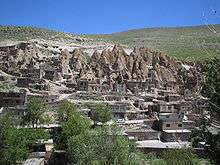
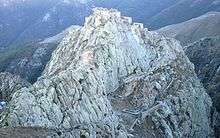

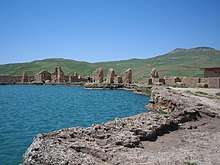
Around Tabriz there are many historically and scenery interesting places to visit. The mountainous region of south Azerbaijan offers breathtaking views and excellent treks among castles, rocky paths and remote villages.
- 🌍 Kandovan Touristy village, Osku-Kandovan Rd. (Convenient wayː Darbast taxi, which costs about 20 USD, or €35 return organised by the Tourist Information Centre (Nasser Khan) next to the Bazaar; Economical wayː Take the minibus next to Golestan park, which costs about 2 USD. Around 1.5 hours drive.). Located 50 km south of Tabriz, this village is famous because of man-made cliff dwellings which are still inhabited excavated inside volcanic rocks in foot hills of Mount Sahan. It is similar to dwellings in Cappadocia, Turkey. Great for both the odd beauty of the place and to see the daily life of an Iranian village. Women in printed chadors can go outside and playing kids are all around. Resistant walking shoes are mandatory if you want to climb up the village. A river passes through the valley, with a number of natural springs to the north of the river. Natural cones, scattered over a vast area, serve as human dwellings on rock formations which themselves seem to have been the work of sculptors. The road from Tabriz goes through this natural artwork. Large families live inside two or three of these hollow interconnected cones with features such as openings on their surface as windows. The lowest cones are used as stables and those on top as the living quarters. The interiors of the dwellings, usually divided into a living and a bed room, are dimly lit; however, the villagers are used to it. The interconnecting corridors are very narrow. From the outside, the dwellings look so similar to each other that one may easily get lost in the village. Steep pathways and steps are made of rock pieces for animals as well as human beings. As the legend goes, the first people to settle here were the soldiers involved in military operations nearly 800 years ago, who found the cones by chance and used them as their temporary camouflage and accommodation. However, among archaeologists, it is considered to be of Pre-Islamic Period.
- 🌍 Lake Urmia (Sharafkhaneh Port about an hour north of Tabriz). A salt lake with salt beaches and improbable bathing spots (gender separate, of course). Numerous migratory birds stop there on their long trip for some rest and food. The lake is drying because of the many dams on the feeding rivers, so check for the status of the lake before heading towards the lake.
- 🌍 Babak Castle, Babak Castle Rd., Kaleybar (You must rent a taxi for a day from Tabriz or take minibus trip.). A 9th-century castle in the peak of Jomhour in the middle of Arasbaran Forrest. It is nested on a rocky peak at an altitude of 2,700 m. Babak was one of the Iranian heroes fighting the Arabs invasion, around 9th century. The road goes up to the foot hills of the Jomhour castle and from there it takes 2 hours hiking walk to get up to the peak where the castle is, but definitely worth it. The castle has an interesting military design which made it impenetrable for invaders back in the days. It has also nice view to the forests around. It is better to visit it in summer time to avoid the harsh winter weather of the Azerbaijan region.
- 🌍 Mount Sahand. A big dome topping at around 3,700 m. Interesting to climb in summer, or for skiing in winter (1 lift available, another in progress)
- 🌍 Saint Stepanos Monastery, Border line, West of Jolfa. (Take a three-hour ride from Tabriz to Jolfa, then turn left at the border and drive about thirty minutes along Aras river westward.). This 9th-century Armenian church is north of Tabriz and south of Aras River, close to the Iran-Nakhichevan border. Along with two other Armenian churches in the region (St Thaddeus and the Chapel of Dzordzor) it was inscribed a UNESCO site in 2008.
- 🌍 Takht-e Soleymān (5-hour ride from Tabriz towards the south, The rout passes through Bonab, Shahin Dezh, and Tekab). It is remnants and ruins of seventh century Iranian Royal Palace and Zerdostian Temple dated to 224-651 AD inscribed a UNESCO site. It includes a lake in the center of palace and the ruins of the Sasanid palace around the lake. There is a royal prison located several miles away from the palace. Takhte Soleyman is named one of the 10 best ancient ruins by The Guardian: newspaper. The name means the Throne of Solomon, in earlier ancient period known as Shiz or Adur Gushnasp, literally "the Fire of the Warrior Kings".
Do
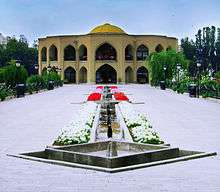
- 🌍 Hike in El-Goli Park (formerly known as Shahgoli park) (Southeast of Tabriz, Shah-Gulu (Bus line: 130)). El-Gulu or as local calls Shah-Gulu is a grand park in south east of Tabriz. There is a big rectangular artificial lake in the middle of the Park with a restaurant. This place used to be a summer palace for the Iranian royal families during the time that Tabriz was the capital of the state and once it was the resident for the crown prince. Nowadays the palace in the middle renovated in the form of a restaurant and a small amusement park is constructed in next to the park. In summer time many residents came to the park and dust hike through the pedestrian pathway around the lake or have their dinner in the Forrest hills next to the lake.
- Hot springs and Hydrotherapy Resorts in the north-west of Iran. Important and rich hydrotherapy centers such as "Sare Aine", Boostan Abad, and specially the coastal strip along Urmia Lake enjoy great popularity among all tourists. Situated 20 km from the city of Ardabile, Sare Aine Spa forms one of the most significant health resorts in Iran. Moreover, hot springs rich in phosphoric and other mineral properties, located in this region, substantially contain various medicinal benefits. As a picturesque natural phenomenon comprising distinctive medicinal and healing features, Urmia Lake definitely constitutes one of the main attractions around Tabriz.
- 🌍 Baghlar Baghi Amusement Park (Chay-Kenar Blvd.). The biggest amusement park in the Northwest of Iran. Its normal operation season starts late spring and lasts to early autumn.
- 🌍 Hike in Mt Eynali and its artificial forest (in the north of Tabriz). Eynali is the mountain range in a shape of a red wall just in north neighborhood of Tabriz. The red wall can be seen from most parts of the city. Many of Tabriz residents hike to the first peak of Eynali in early mornings or in the weekend. There is a paved trail from the foot hill of Mount Eynali in Northern highway of Tabriz to first peak of mount Eynali however there are more difficult trails to the peak, and a 90-degree wall as well. Eynali cable, a gondola lift, goes from the base to the station 1 at the peak. The station 1 which calls The Roof of Tabriz has a view to almost all of the city. There are couple of sites in the top station including an old shrine (a former Zoroastrian Temple), a monument for the unknown fallen soldiers (war heroes), two windmills and a restaurant, Bam-e-Tabriz. A small food court next to the shrine sells hot tea, milk, and appetizers.
- 🌍 Watch Soccer in Sahand Stadium (Sahand Stadium in the south of Tabriz). Sahand soccer stadium, the second largest soccer stadium in Iran, is located in the south of Tabriz. The city also hosts three Iranian Pro-league soccer teamsː Tractor-Sazi, Gostaresh, and Machin-Sazi. During Iran's soccer season, there are normally weekly matches at Sahand Stadium. In Iran, women are banned from attending men's soccer matches.
- 🌍 Watch International Cycling Tour of Azerbaijan (City center of Tabriz). May (check the schedule on the web site).. This is an international road cycling tour called Tour of Iran (Azerbaijan) which is held annually in Tabriz. It starts from the city center of Tabriz and lasts about a week. Check for this year's schedule on the tour's web site. free.
- Watch Movies and Theater and listen to Music. Most of the movie theaters are located in the city center of Tabriz close to Shahnaz St. The majority of the movies are Iranian movies in Farsi with no subtitles. There are some local theater and music festivals time to time which are held normally in one of the following saloons: Vahdat (in main campus of University of Tabriz), Moalem in Northern Artesh St., and Petrochemical Cultural Complex in Chay Kenar Blvd.
- Watch Muharram Ceremony, All over the city. This is a ten-day religious festival for mourning Shia Imam Hossein, who was killed in the seventh century. Most of city residents wear black shirts. In first nine days of festival people come to streets after sun set with drums and march in the streets. At the tenth day, called Ashura day, the ceremony starts from early morning and lasts up to sunset. Many people donate food, tea, and sherbet in the streets in tenth day. The ceremony held every year based on Islamic Lunar Calendar from Muharram 1st to Muharram 10.
- Watch Nimeh Shabann. This is a religious Shia ceremony to celebrate the birthday of the Imam Mahdai. Normally there are fire works all around the city. The ceremony is held in the city based on the Islamic lunar calendar on the night of Shaban 15.
- Watch Akhir-Charshanbeh (Charshanbeh Souri). This is a major fireworks ceremony held on the last Tuesday night before March 20 every year. During the day people go to the new year shopping and traffic jam is expected in downtown area. Then people all around the city celebrate the night by a very intense fire works. They also make bonfires and young people jump through the fire. This is one of the major pre-Islamic ceremonies which have survived till today. It is normally safe to participate but always consider take necessary safety measures as there is no official regulations.
- 🌍 Ski in Sahand Resort (پیست اسکی سهند). Sahand Ski Resort is the biggest ski resort in the north-west of Iran. Its seasonal operation normally starts in January and it continues up to mid March. It has two ski lifts, a small resturant and shelter which normally operate on Thursdays and Fridays. You can get information about road conditions and snow conditions from the Ski Federation in Tabriz.
- 🌍 Ski in Yam Ski resort, ☎ +98 413 441 6895. Yam is an ski resort in north of Tabriz in vicinity of Marand cirty and in northern foot hills of Mishoodaghi. It is accessible via Tabirz-Marand highway.
Learn
Tabriz is the site for some of the major Iranian universities including University of Tabriz, Sahand University of Technology, Azad University of Tabriz, Payam Nour University of Tabriz, and Azerbaijan University. Tabriz University offers degree programs for foreign nationals through the regular application without entrance exam the entrance to other universities is through entrance exam.
There are couple of big libraries in the city including Tabriz National Library which are holding some of the oldest handwritten Iranian literature and modern texts.
Buy
Souvenirs
- Tabrizi nuts and Dried Fruits are quite famous in the region. There are a couple of famous stores which are known nationwide, including Tavazoe (in Abrasan Square, Imam Ave.), and Rex (Shahnaz Sq., Imam Ave.)
- Tabrizi carpets are among the finest in the world, and you will find masterpieces in shops and inside the Bazaar. These rugs are among the most decorative rugs and frequently use colors like pink, red and cream. Prices for rugs in Tabriz are about 50% less than in most Western countries. You should consider the customs rules of Iran and your home country, too. Typically, for 2 rugs, there is no customs fee or tax.
- Gold and silver jewelry is also a local handicraft.
Traditional shopping center
- Tabriz Bazaar (City center). Tabrzi Bazar which is the largest historic arcade in the middle east is still one of the biggest shopping centers in the city. In Tabriz Bazar to every alley is assigned for specific good example: Amir Alley for gold, Moazafarriey for Carpet and so on.
Modern shopping centers
The three big modern supermarket are: Refah, Sepah, and Laleh. There are small supermarkets all around city and some other smaller arcades in the city center in Tarbiat St.
- 🌍 Refah, Laleh square, Azadi Blvd.. An Iranian chain store.
- 🌍 Sepah Shopping Center, Daneshsara Sq..
- 🌍 Laleh Park Shopping Center, Fahmideh square. The most modern shopping center in northeastern Iran, offering international brands. Includes food court, playground and hypermarket.
Eat
Traditional cuisine: Kabab, rice, Abgousht (meat broth), Kufte Tabrizi (big meat ball) some restaurants serve them all, but if you step inside a more modest Chelowkebabi, odds are you won't have much choice apart from the traditional rice and kebab. But still you can find some restaurants which serve all, for instance there is a historical bath Nowbar Bath in city center which is renovated as a traditional restaurant in recent years and it serves Abgousht, Kufteh, and other foods.
Food vendors: There are food vendors in Shahgoli's main square during late spring and summer. Their offerings include roasted salted corn (locally called makka)and/or boiled eggs and potato wrapped in flat bread (called yeralma yomurta). They normally stay open till midnight.
Fast foods: There are small fast food restaurants for pizza, and sandwiches all around the city.
Drinks: The most common drink in Tabriz (likewise many other middle eastern cities) is tea which is served in tea houses along with option of qaliyan (shusha). The famous traditional cold drink is dough (yogurt juice) which is served in restaurants and it is also being sold in supermarkets along the cities.
Fresh smoothiesː There are many stores in Imam Ave, between Saat square and Ferdowsi street, that are serving smoothies. The most popular ones are pomegranate, bananas, and watermelon. The smoothies in these stores are mostly sugar sweetened.
Confectioneries and dried nuts: Tabriz is famous for its confectioneries and dried nuts. Some of the most famous confectioneries are Qurabiya, Tabrizi Luvuz, Zulbia, Pashmak, Nuga(or Nuqa), and Ris. There are no chain stores like in many big cities so you have to go to confectionery store. Some of the famous ones are: Karimi (in Vali Asr district), Eftekhari, and Reks (in Imam Ave close to Shahnaz St.)
Fruits and vegetableː fresh fruits and vegetables can be purchased from Rahli Bazar in the city center. There are also smaller shops around the city for fruits and vegetables. Sometimes vendors also sell fruits and vegetables from the back of their trucks for a cheaper price. Fruits and vegetables are normally brought to Tabriz from gardens and farms around the city and from gardens of other parts of Iran.
Cold and frozen deserts: In summer time ice cream and faloodeh is sold in some of the fast food restaurants in the city center. Many of these ice-cream places is a family business and they have their own secret recipe for ice cream. The recipe passes from generation to the next generation inside the family. The most famous ones are: Shams (in Imam Ave close to saat), and Vahid (in Ark Alley).
Hot appetizers: Labou (hot boiled sweet red-beet) and Pakhla (salty boiled Fava Beans) are sold normally in winter time by peddlers in street sides.
- 🌍 Tabriz Modern Restaurant, Near to Shariati Square, Emam Kh St, ☎ +98 (41)35563841. Kababs, Kufta, Dolma, Salad, and bread are all good
- 🌍 Delestan, In front of University of Tabriz, 29 Bahman Blvd, ☎ +98 (41)33338507. Turkish, International, Persian, fast food, pizza & pasta, grill, chicken wings
- 🌍 Tooska, Shah-Gulu Blvd.. Fast Food
- 🌍 Chinese Resturant.
Drink
Nightlife may not have the same meaning in Iranian towns as in Western cities. Apart from private parties, there is nothing even vaguely close to a nightclub in the whole country. However, places for getting out at night in Tabriz include ice cream & juice houses, kebab restaurants, Qalyan (hubble bubble), and tchaikhaneh. Going to theaters and walking around some of the major streets (Valiasr district, Abrasan, and Shahnaz Shariati St.) is one of the major hobbies of the youngsters in Tabriz. In the summer, families go to some of the big parks to have their supper in a public area in a picnic style way.
Sleep
There is a good variety of hotels. Downtown, Ferdowsi street hosts many guest houses and there are many independent and national hotel chains from the mid-range to the high-end located mostly in central and in Southeastern districts of Tabriz.
Hotels
The hotels are convenient but relatively expensive. The hotels in city center are recommended if you are looking to see the historic sites of Tabriz and feel the life of Tabriz residents, while the hotels in new suburbs are far away from the city center and mostly used by business travelers. Here is a list of major hotels in Tabrizː
- 🌍 Tabriz Hotel Pars (also called Hotel Shah-Gulu), Next to Shahgoli Park, ☎ +98 (413) 338-07820-30. This hotel probably is the most famous hotel in the city. It is often used by business travelers. Prosː It is next to Shahgoli Park. swimming pool. Conː Located far away from the city center. It is five-star but not worth the price.
- 🌍 Shahriyar International Hotel, Shah-Gulu Blvd., ☎ +98 (413) 332-91420-29. Five-star but not worth the price. It is far away from the city center. Often used by business travelers.
- 🌍 Tabriz Hotel International, In Front of Blour Tower, Emam Ave., ☎ +98 (413) 334-1081. Renovated interior, very clean and quiet, semi-international standards (meaning new western bathroom, soap, clean towels, room service, buffet breakfast, TV, mini-bar, English-speaking staff. Worth a good European 3-star hotel. USD50 single, USD75 double (breakfast included).
- 🌍 Hotel Gostaresh, Abrasan Sq., Emam Ave., ☎ +98 (413) 334-5021.
- 🌍 Hotel Azarbaijan, N. Shariaty St.. Dirty and noisy, definitely not worth it. 375.000 rials Double Room..
- 🌍 Ark Hotel, In front of Baghe Golestan (Fajr) (City center). inside Ark alley. Very impolite staff. May not relay messages left by your local contacts for you, by phone or orally. Especially if you are a female and message was left by male local or vice versa.
- Hotel Morvarid, In front of Baghe Golestan (Fajr) (City center). Formally polite staff but will interfere and investigate your relations with locals! May not get your local contacts messages for you in your absence or let them wait for you in lobby. Will warn them they are not permitted to contact foreigners.
- 🌍 Qods Hotel, Mohagegi St (The opposite of old terminal (facing toward square).), ☎ +98 (413) 556-8098. Clean and excellent staff. 450,000 rials.
- 🌍 [temail= Hotel Darya]. It include in the price Wi-Fi, satellite channels, breakfast, swimming pool, and sauna.
- 🌍 Hotel Park, Between Shahnaz and Golestan Park, Emam Ave, ☎ +98 (413) 555-1852. wi-fi, TV, minibar, air conditioned rooms, and some English speaking staff. It is located in the down town close to the historic sites. four bedː 160,000 toman, doubleː 100,000 toman, and single bed 60,000 toman.
- 🌍 Behboud Hotel (هتل بهبود), No 9, Shoar Alley, next to Shahid Beheshti Clinic, near Baghshomal Square, off Southern Artesh Street, ☎ +98 (413) 557-6647-8, fax: +98 (413) 557-6649. This new hotel rents out huge apartments that sleep up to four people. Kitchens are provided but most of the equipment for preparing some food yourself is not. The hotel attributes four stars to itself, which is not justified. Its quiet location a few blocks off the bazaar and the town hall makes it a good option, though. Expect 270,000 toman for double occupation. Bargain (or have your Iranian partner do it for you) for longer stays.
Guest houses
Guest houses are mostly located in Ferdowsi Street and Amin Street. Beware that many guest houses charges extra if you want to shower (around 2-3000 toman extra is not unusual).
- Mashad Guest House, Ferdowsi Street (Near the tourist office ask there). Single roomː start from 400,000 rials not including shower(shower 60,000 rials per time).
Cope
Tourist Information Centre
Next to Tabriz Bazaar on Ferdowsi Rd (look for big black sign). Nasser Khan at the centre can help you with all your queries about Tabriz and its surroundings, and will probably also offer you some well-brewed tea.
Consulates

Connect
Phone
- Country Code for Iran: +98
- Area Code for Tabriz: 041
- Tabriz Cellular Phone (Code): 0914
Internet
- Deniz Internet Cafe, Maghazahaye Sangi Alley (off South Shariati St). A good area to hang out. There is coffee shop down the road that has an espresso machine and the guys who work at the internet cafe are friendly helpful, speak English and are fun to hang out with.
Stay safe
- See also the information at Iran#Stay safe.:
Tabriz is a safe city; however, like any other major big city in the world, you should always consider common sense safety measuresː do not leave your luggage unattended and never leave your car or your bike unlocked when you are walking a long distance away.
Emergency service
- For all emergency services callː 110
Respect
- People in Tabriz respect bread. Never walk on bread or never throw it away in public.
- During Ramadan, eating, drinking, and smoking in public is forbidden by state law. But as a traveler you can eat and drink in many of the restaurants with the curtain down, in a way that the served food is not visible from street.
Go next
- Sardroud
- Ardabil
- Kandovan — small village with houses carved in the rocks like in Cappadocia, Turkey
- Maku
- Maraghe
- Osku
- Takab — Takht-e Soleyman, a Zoroastrian fire temple and a UNESCO World Heritage site, is located nearby
- Urmia — capital of West Azerbaijan province
- Zanjan